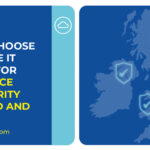Session Token Theft Explained: Understanding the Threat and How to Stay Safe
Picture this: you’ve just logged in to a web portal like Microsoft 365, gone through the usual username and password steps, and are now busy working away. Behind the scenes, a little piece of data known as a session token tells the website that you’re still “you.” It’s like an access-all-areas pass, ensuring you don’t have to re-enter your login details on every new page. However, if a criminal gets hold of this pass, they can effectively step into your shoes and take over your session without needing your password again. That, in a nutshell, is Session Token Theft.
Below, we’ll take you through what’s going on when a session token is stolen, why it’s dangerous, and what practical steps you can take to reduce the risk.
What Are Session Tokens?
Session tokens are small bits of data (often stored in browser cookies) that websites and apps use to recognise you while you’re logged in. Every time you click on a new page, your browser quietly sends this token to confirm it’s still you requesting access. It’s a handy system that makes online experiences smoother but if someone else grabs hold of that token, they gain the same access you have.
How Criminals Get Hold of Your Tokens
- Phishing Scams
Attackers trick you into clicking a link or visiting a website that secretly scoops up your session token. This is sometimes as simple as convincing you to log in through a bogus portal designed to capture both your password and your token. - Man-in-the-Middle Attacks
If you’re using public Wi-Fi networks without secure connections, attackers lurking on the same network can potentially intercept your session tokens while they’re in transit. - Malware
Infected attachments, rogue apps, or malicious software updates can install spyware on your device and lift session tokens directly from your browser files.
Why Does It Matter?
The main danger is that a criminal can slip into your account undetected. They don’t need your password anymore—just the token—and they have full access to your account until the session ends or the token is invalidated. That could mean reading or deleting emails, making changes to your company data, or even launching further attacks across your organisation.
How to Stay Protected
- Log Out Properly
Whenever you finish a session—especially on a shared or public device make sure you fully log out. This forces the website to invalidate the old session token and issue a new one if you log in again. - Use Secure Networks
Avoid entering sensitive information on public Wi-Fi unless you’re using a trusted virtual private network (VPN). A VPN encrypts your connection, making it much harder for attackers to snoop. - Watch Out for Suspicious Links
Phishing messages often look extremely convincing. If you receive an email or text encouraging you to click on a link or fill in details take a moment to verify. Better safe than sorry. - Keep Your Devices Updated
Regular security patches and software updates help close loopholes that attackers might exploit. It’s an easy step that often gets overlooked. - Enable Multi-Factor Authentication (MFA)
While MFA doesn’t always stop session token theft by itself, it adds another barrier. If someone tries to log in as you, they may still be prompted to enter a second code sent to your phone or email. - Monitor Active Sessions
Some websites and apps allow you to see all active sessions. If you notice any unusual locations or devices listed, you can revoke them to instantly block an attacker who might have stolen a token.
Final Thoughts
Session Token Theft might sound technical, but at its core it’s about someone pretending to be you online by nabbing your digital “I.D.” The good news is there are straightforward ways to lower the risk from logging out properly and using secure networks to staying vigilant for phishing attempts.
As always, a few small steps can make a big difference. With some basic awareness, you’ll be better prepared to protect your business and keep those session tokens where they belong in your control.


